Winners of the Nature TTL “Photographer of the Year 2023” competition (30 photos)
The winners of the prestigious Nature TTL Photographer of the Year 2023 competition have been announced. 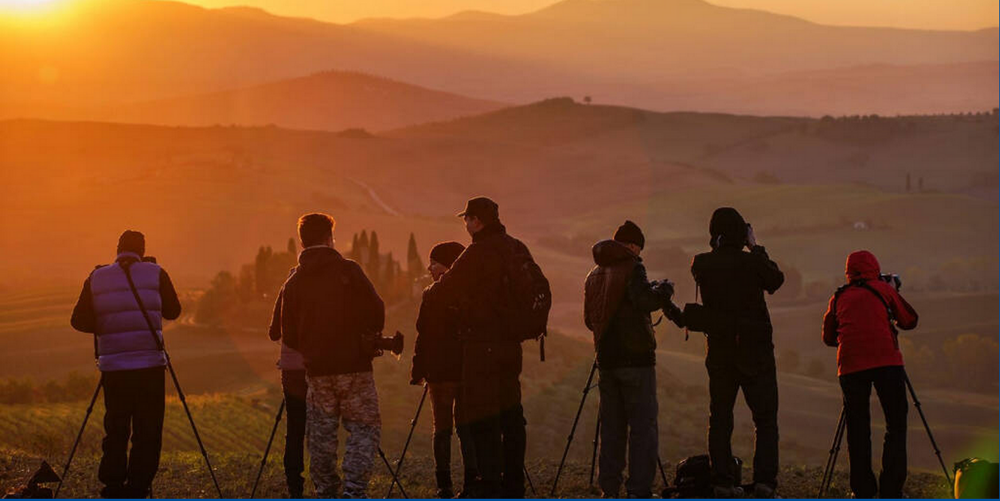
This year's nature photography competition received over 8,000 entries from around the world in various categories dedicated to the natural world: Animal Behavior, Camera Traps, Landscapes, Small World, Night Sky, Underwater, Urban Wildlife, Wild Portraits and an award for children under 17 years of age.
The organizers of Nature TTL have placed captions under the photographs, written by the author-photographers and lightly edited for style. [Do not judge strictly the direct (for informational perception only) translation from
Google.
]
Just
take a look at the incredible images. Thanks to the extremely high standard of images, this year's photographs are simply stunning. 
Thomas Vijayan, Canada The Austfonna Ice Cap, the third largest in the world, on the island of Nordaustlandet in the Norwegian Svalbard archipelago covers an area of about 8,000 square kilometers. It is melting at an alarming rate due to global warming and contributing to sea level rise; serious concern. I visited the Austfonna Ice Cap and took an amazing photo of a waterfall created by melting ice. Although I've been here before, it was disappointing to see the sea ice melt in June. 

WINNER - Simon Biddy, UK Compared to their female counterparts, male California sea lions are larger, have thicker necks and a prominent gray sagittal crest. During the mating season, males become territorial and protect their harem of up to 30 females. This male allowed us to stay in the group for an extended period and showed us more curiosity than territoriality. The number of sea lions in the area has increased compared to other colonies in Mexico. This is due to the protection provided by the UNESCO World Heritage Site and National Marine Park, where an exclusion zone protects the entire food chain, providing a rich source of food for sea lions.

SECOND MARK – Robert Glöckner, USA. A great blue heron disappears into the green light on the Florida coast. The green light is actually the reflection of a traffic light in the water. With their natural habitat diminishing, great blue herons often make it difficult for people, especially fishermen, to obtain easy food. I purposefully focused on the green background of the bird and deliberately used camera movement to give this image a fading perspective.
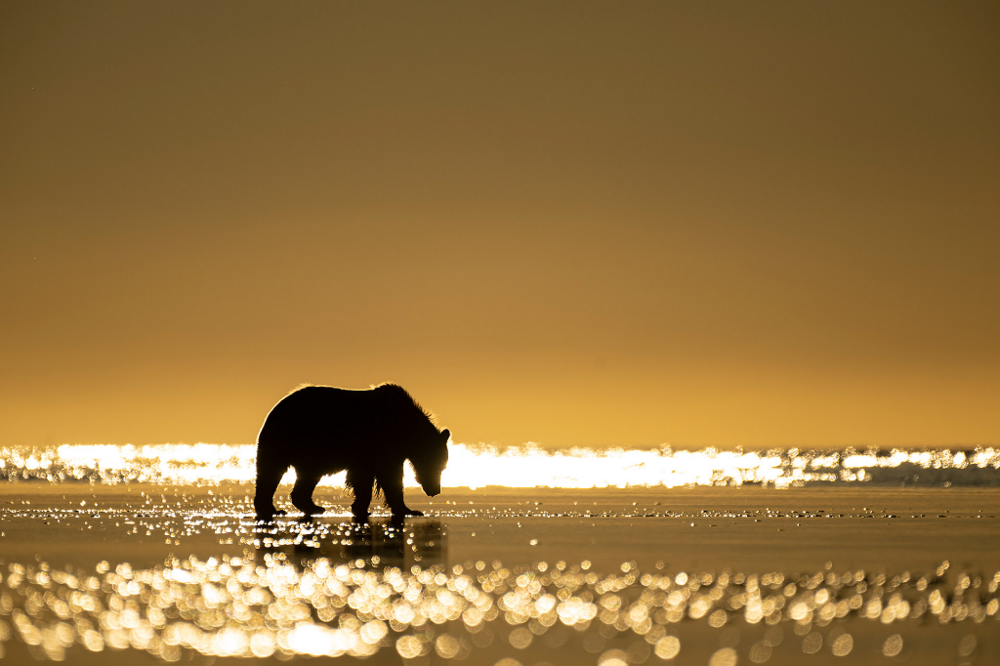
HIGHLY RECOMMENDED – Julie Gros

HIGH RECOMMENDATION – Paul Lennart Schmid

WINNER - Fernando Constantino Martinez Belmar, Mexico This jaguar had been seen before, so I decided to set up a camera trap in the broken wall leading into the jungle. I strategically positioned one of the flashes so that the jaguar's shadow was reflected on the wall behind. Poaching, deforestation and habitat fragmentation have led to increased interaction with humans, and in most cases this does not end well for these cats.

SECOND PLACE – Igor Mikula, Slovakia. The next generation of the common blackbird lives in the bathroom window at my friend's dacha. I observed their behavior for many hours, and the presence of my camera did not bother them, even during feeding. No bait was used; I took this photo using a remote trigger.

HIGH SCORE – Tibor Litauski
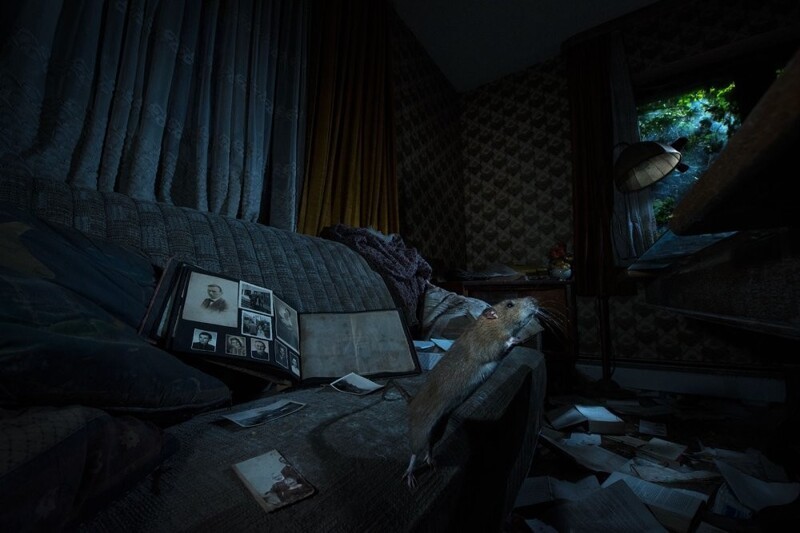
HIGHLY RECOMMENDED – Florian Smith

Second place – Florian Smith, Germany. Using a drone to get a unique perspective, I captured a stream of the Rio Tinto River in Spain.

HIGH RECOMMENDATION – Justin Minns

HIGH SCORE – Bernhard Schubert

WINNER - Florian Smith, Germany This photo was taken in Rondane National Park in Norway. It shows a dead moth lying on the surface of a bacterial film. When I looked through the viewfinder, it looked like a painting.

SECOND MARK – Ikai Chang, Australia. I found a colony of carpenter ants at Black Mountain Nature Reserve in Canberra. I spent several weekends observing their behavior. On a return visit, I noticed that they continued to cruise among the leaves of the grass tree, as if they were looking for a new source of food. When the carpenter ant climbed onto one of the leaves, a simple but wonderful scene appeared before my eyes. The ant, leaves and focal plane seemed to freeze in a fraction of time. It fit perfectly with the theme I wanted to express: the connection between nature and the universe. Without any hesitation, I grabbed the camera to capture this moment forever.
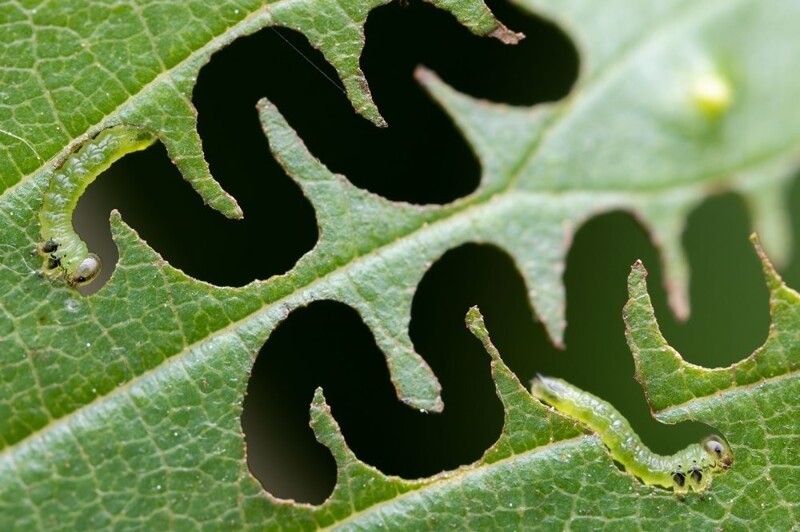
HIGHLY RECOMMENDED – Andrew Neil

HIGH SCORE – Bernhard Schubert

WINNER - Rowan Deere, UK Over the past few years I have witnessed large concentrations of Jelly Blubber jellyfish in Sydney from around March to April when the wind and current bring them in from the north. This year we had 2-3 times more of them than I've ever seen. In one place there was a large accumulation that extended approximately 5 meters deep. From the surface, shooting down, it was interesting to get a real volume of perception of how many there are, ... and to create this alien environment.
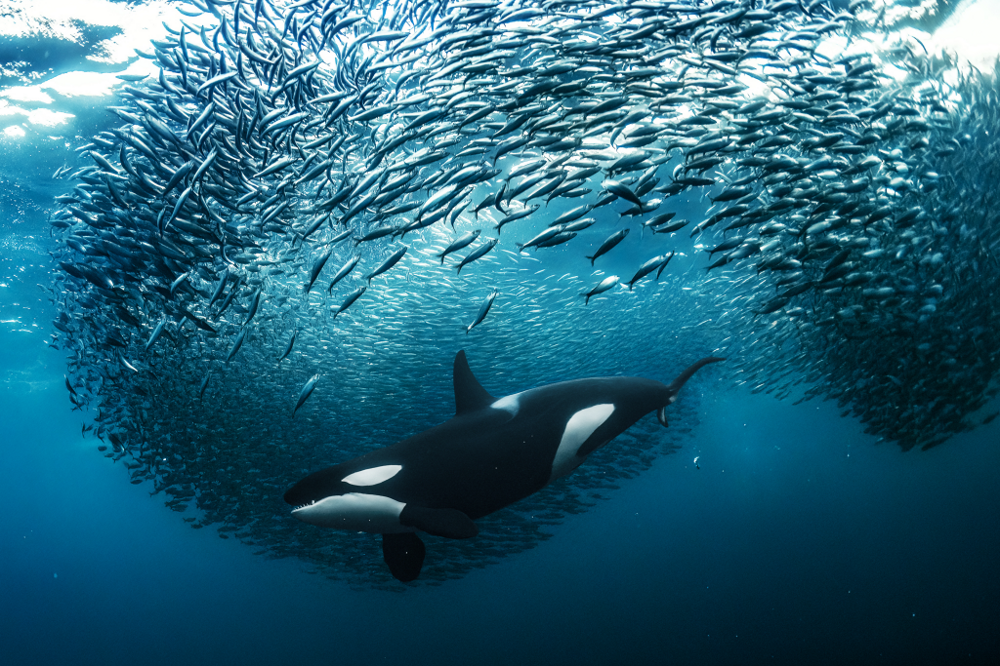
SECOND MARK – Andy Schmid, Switzerland. Every winter, huge schools of herring migrate from the open ocean into the fjords of Northern Norway and attract large numbers of large predators such as killer whales and humpback whales. Watching killer whales feed on herring using the so-called "carousel" fishing technique is very interesting, but it is not easy to catch due to various factors: limited light and visibility, fast pace of action, and cold surface and water temperature. In such conditions it is difficult to freedive and capture what is happening in a constant feeding frenzy, but I managed to capture a female killer whale.
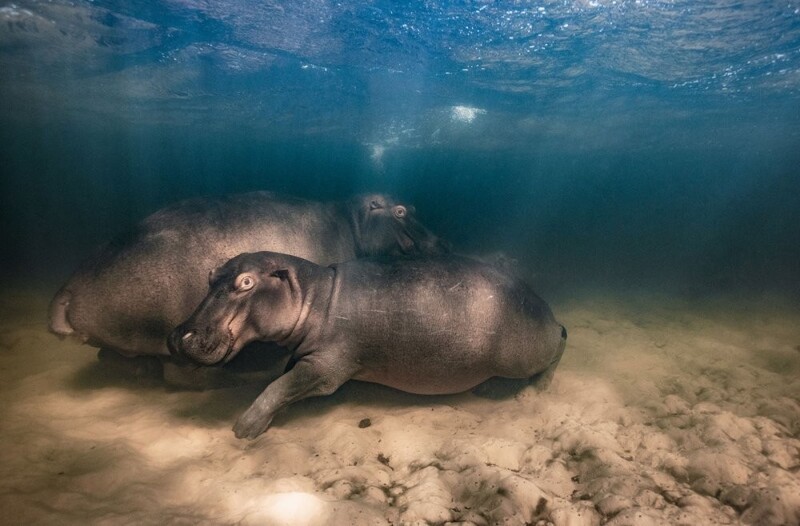
HIGH SCORE – Mike Korostelev

HIGHLY RECOMMENDED – Talia Grace

WINNER - Bence Mate, Hungary I continue to look for new perspectives in wildlife photography. This photo was taken with a remote control camera placed in an aquarium. It was lucky that the boar remained motionless at the moment the photo was taken. In Hungary, where this composition was captured, the Milky Way is very rarely low enough in the sky to touch the horizon, and this phenomenon only occurs for a few days in August.

SECOND PLACE – Josselin Cornu, France. This photo captures an amazing moment. This is one of my most challenging shots to date. It's incredibly rare to see auroras in this Icelandic waterfall cave, as they are usually visible to the north or overhead. The stars are aligned: clear weather and G1/G2 forecast. After waiting three hours in the cold, at 3 am the auroras moved south, presenting a breathtaking spectacle. I quickly took photos to capture the moment using the 14mm lens at two exposures (0.6s, f1.8, ISO 6400 for the auroras and ~20s, f1.8, ISO 1250 for the cave at EV-1) to provide shade. Fifteen minutes later the auroras moved north again.

HIGH RECOMMENDATION – Josselin Cornu
<imgsrc="https://cp22.nevsepic.com.ua/post/54/908_files/1e32118e8e68eaaf1d80198340f22d46.png">
WINNER - Florian Smith, Germany This image shows a brown rat in an abandoned house, taken back in 2018. I used three flashes to light the scene and used a PIR motion sensor to trigger the camera.

SECOND MARK – Simone Baumeister, Germany. Once I really wanted to take such a photo at dusk, but without light it is always difficult. So, I approached the pedestrian bridge, from which I had a direct view of one of the main transport junctions of our city. There were a lot of insects on the railings of this bridge. Using an old analog lens, I photographed the spider against the backdrop of the colorful lights of a city intersection with many cars.
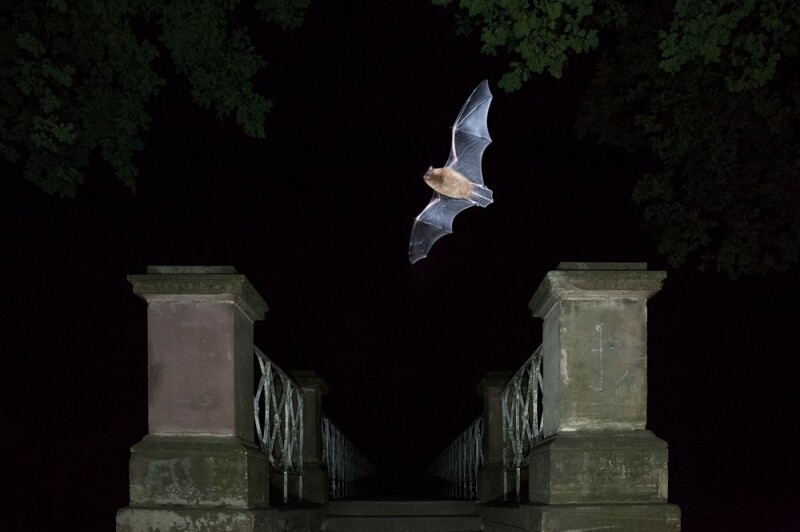
HIGHLY VALUED – Jan Pieha

HIGH MARK – Antonio Aguilera Galisteo

WINNER - Lucy Monckton, UK While walking in Staffordshire, I was alerted to the presence of this swarm by a loud buzzing sound. I carefully walked into the center of the swarm, where thousands of bees were crawling along a branch. It was important to remain calm, so although I was worried about hundreds of bees crawling all over me, their well-being was my priority. Relocation is a natural process that occurs when a colony becomes too large for its home; the queen leaves with a few bees to find another home.
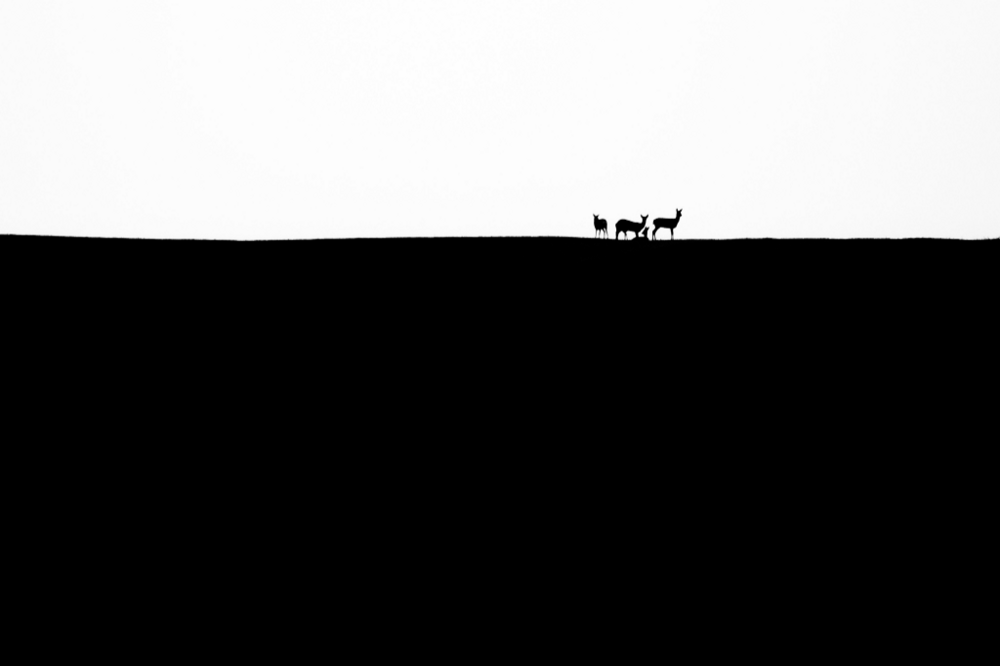
SECOND MARK – Akos Ersi, Hungary. My friends and I were birding during the winter school holidays. In the rays of the setting sun I spotted these deer on top of a small hill. They were quite far away, but I managed to create a beautiful composition.
